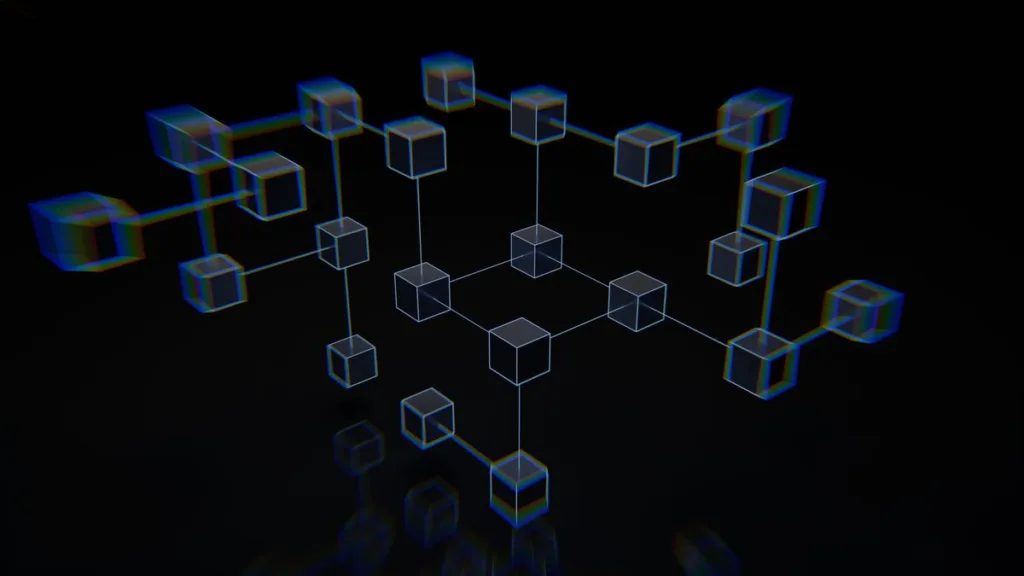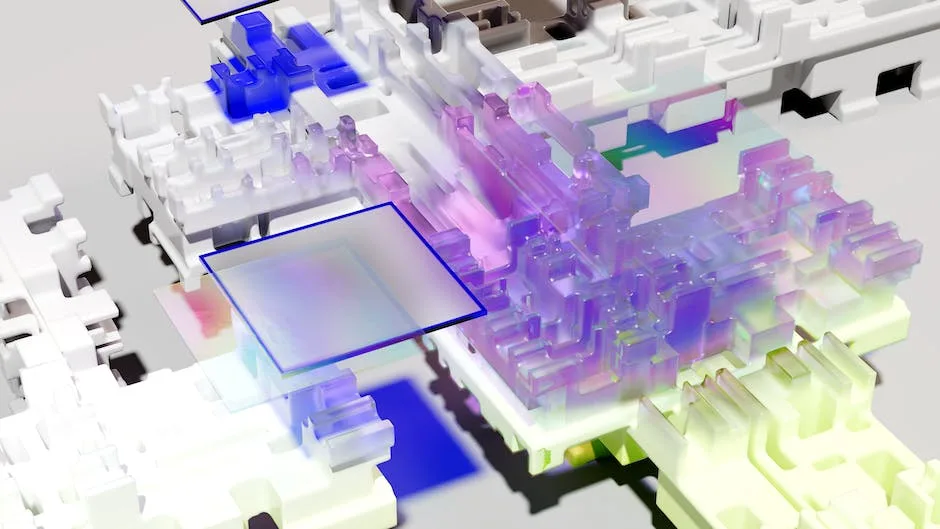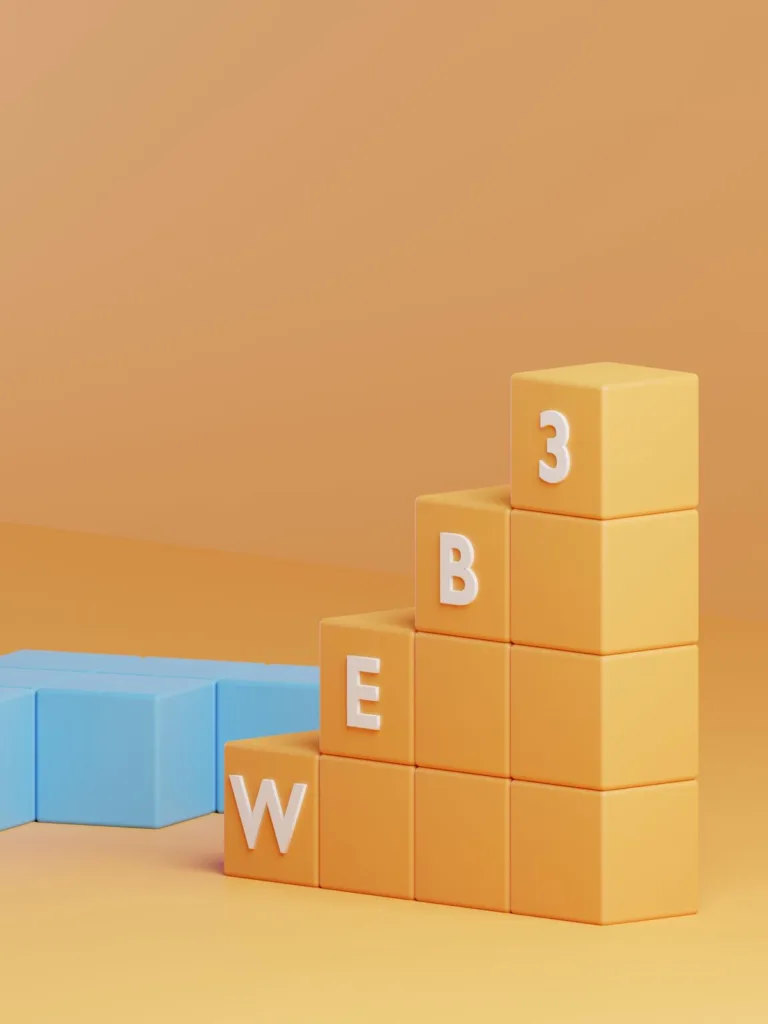Unraveling the Blockchain Consensus Algorithm

In a world where technology reigns supreme, the blockchain domain is witnessing a revolution. The underlying architecture of these are consensus algorithms, namely Proof-of-Work (PoW) and Proof-of-Stake (PoS), that work tirelessly to maintain the pulse of this innovation. PoW and PoS, while serving the same fundamental purpose, approach the need for consensus and security in distinctive manners. This discussion offers an enlightening delve into these fascinating concepts, illuminating the intricacies of their operations, and considering their comparative strengths and weaknesses. From the runes of mathematical problems to the fiscal powers in block validation, we embark on a journey exploring the heart of blockchain technology.
Understanding the Basics of Blockchain Consensus Algorithms
Deciphering Blockchain Consensus Algorithms and Unraveling Their Importance
From its humble beginnings as the underlying technology of Bitcoin, blockchain has evolved massively over the past decade. It has metamorphosed into a behemoth that has the potential to revolutionize a wide array of industries. At the heart of this blockchain revolution are consensus algorithms, the decision-making mechanisms exuding their own flavor of technical wizardry. Their role? To ensure uninterrupted harmony within the blockchain network. This article will delve into the intriguing world of blockchain consensus algorithms and underscore their critical importance in maintaining the integrity and functionality of the chain.
Blockchain Consensus Algorithms: Putting Mumbo Jumbo to Rest
In the simplest terms, a consensus algorithm is a protocol through which all nodes in the blockchain network agree on a single version of the truth. It secures the network, wards off malicious entities, and ensures that every new block added to the blockchain is the one and the only version of the truth.
These consensus algorithm ensure that every single transaction happening on the network is agreed upon by all nodes. Think of it like a democratic voting system, where the majority will determines what is true and what isn’t. But how is this procedure executed? Let’s take a brief look at some of the most common consensus protocols in use today.
Proof of Work (PoW):
PoW algorithm requires miners to solve computationally heavy puzzles to build a new block. The first one to crack the problem gets the reward. Considered as the original consensus algorithm in blockchain, it’s security and decentralization aspects are highly admired. However, its energy consumption and tendency towards centralization due to mining pools are contentious issues.
Proof of Stake (PoS):
This consensus algorithm was developed as a more energy-efficient alternative to PoW. Instead of hoarding computational power, PoS-based networks allocate validation power based on the proportion of coins held by a node. It’s an economical and efficient method, but critics argue it favors the wealthy (“the rich get richer”) and sacrifices decentralization.
Delegated Proof of Stake (DPoS):
In a DPos algorithm, the process leans more towards a representative democratic system. Token owners vote in a certain number of delegates, who validate transactions and maintain the blockchain. DPoS offers considerably faster transactions, but it trades off some decentralization for speed and efficiency.
Byzantine Fault Tolerance (BFT):
BFT algorithms operate by managing situations where some network components fail, ensuring the system continues to function and effectively reconciling different node versions towards a common truth. Although trusted for network security, their scalability can often present challenges.
Why Are Blockchain Consensus Algorithms Crucial?
You might be wondering why all this tech malarkey tables a significant discussion. Well, the consensus algorithms are the bedrock of blockchain. They act as the custodians of blockchain networks, safeguarding their key attributes such as security, transparency, and immutability.
Apart from validating transactions and adding new blocks, they also prevent events like double-spends and ensure that all copies of the distributed ledger are the same. In essence, they grant blockchain its sightings of trustlessness and decentralization.
To cap it all, blockchain revolution rides predominantly on the saddle of its consensus algorithms. The magic of this technology lies in its ability to harmoniously synchronize a distributed network, rendering a unanimous agreement possible on every transaction. Without consensus algorithms, there would be no “truth” in blockchain, thus shattering the utopian world of decentralization it’s striving to build.
Here’s to truly understanding and appreciating the essence of blockchain technology, knowing it’s not just about buzzwords like “cryptocurrency” and “smart contracts”. Strip away all the fluff and what you have at core are consensus algorithms, the unsung heroes that keep the blockchain band playing its radical tune.

Deep Dive into Proof-of-Work (PoW)
Diving deeper into Proof-of-Work, the keystone of many blockchain variations, is a fascinating journey into the core performative processes of blockchain technology. Predominantly used in Bitcoin and other cryptocurrency systems, Proof-of-Work (PoW) is a protocol that aims to prevent cyber attacks and maintain the harmony of the blockchain system.
So, what is this mysterious Proof-of-Work? Well, essentially it is a system that puts a computational wall in front of potential cyber threats. Miners, the people (or systems) who validate transactions and add them to the blockchain, have to solve complex mathematical problems to earn this right. That problem-solving process requires a significant amount of computer processing power and time. That’s the ‘work’ part in Proof-of-Work. The more work you put in, the greater the chance of getting the right to add a new block.
The central concept here is that an immense amount of computational work is needed to add a block, and thus the system validates that the miner has invested legitimate energy and time into maintaining the blockchain system. It also ensures honesty because correcting or hacking past transactions would mean redoing the work for each subsequent block, which is essentially impossible.
This process eliminates the prospect of double-spending, as modifying any record would require hackers to out-race all other miners in reproducing subsequent blocks – effectively requiring a majority of the network’s computing power. This is theoretically possible, but practically impossible due to the shear demands it would place on hardware.
One might say it’s the beauty of blockchain. It uses raw computational power as a virtue through the PoW system, forging a symbiotic relationship between the blockchain and its caretakers. But it’s not all sunshine and daisies. PoW has its critics. The vast amount of energy consumed in the mining process has led to valid concerns about the ecological footprint of blockchain technology.
From this unfavorable point started the development of alternative consensus algorithms like Proof-of-Stake or Delegated Proof-of-Stake, aiming to make blockchain systems more energy-efficient, thus sustainable. Yet, these new methodologies haven’t made Proof-of-Work obsolete. After all, PoW has its own advantages and occupies a critical and undeniable position in the blockchain saga.
In a nutshell, Proof-of-Work is more than a buzzword. It is the fundamental catalyst that validates and perpetuates blockchain systems. By assigning real-world cost to potential threats, it brings security and integrity to the digital chaos and shapes the blockchain as we know it. Future advancements may replace or evolve Proof-of-Work, but its basic principle of aligning incentives with computational commitment to safeguard trustlessness and decentralization will remain central to the game.

Photo by theshubhamdhage on Unsplash
Unraveling Proof-of-Stake (PoS)
Now, let’s delve into the concept of Proof-of-Stake (PoS) and analyse how it operates. PoS operates on a wholly different principle than Proof-of-Work. It doesn’t rely on miners or energy-intensive calculations. Instead, PoS relies on network participants, called validators, who propose a new block to the chain based on their stake in the cryptocurrency.
The term “stake” refers to how many tokens a person holds, and for how long the tokens have been held. In other words, the more tokens someone owns and the longer they’ve held those tokens, the higher their chances of being chosen to propose a new block. This is a major divergence from PoW, where mining power determines the likelihood of proposing new blocks.
The PoS process begins with validators who express interest in block generation by ‘locking up’ some of their tokens as a stake. After this, the blockchain’s protocol determines who gets to create the next block. This is based on the amount each validator has staked, combined with certain other factors including randomization processes and the length of time a validator has been staking.
Once a validator proposes a block effectively, they are then rewarded with transaction fees. Notably, unlike PoW, PoS does not issue new tokens as rewards. This means PoS systems are inherently deflationary, making them a potentially attractive prospect for long term investors.
One potential issue with PoS, however, could be the possibility of centralization. Since wealthier participants have more stake, they get to propose more blocks, leading to a snowball effect of increasing wealth. To alleviate this, some blockchain designs introduce other criteria to the selection process, including ‘coin age’, which refers to how long a validator has held their tokens.
In the event of malicious behavior, PoS systems enforce penalties. A validator could lose their stake or have it slashed if they propose incorrect transactions or attempt wrongdoings.
In contrast to PoW, PoS is incredibly energy efficient, as it does not rely on a continuous solving of computational puzzles. It offers a practical and sustainable approach to consensus. Additionally, it rewards participation in the network with transaction fees, ensuring a stable income stream for validators.
However, Proof-of-Stake is not a magic bullet. It has its drawbacks such as risks of centralization and susceptibility to certain forms of attacks. But efforts are continuously being made to address these issues, making PoS an incredibly dynamic field within blockchain technology.
Blockchain is far from static, with several variations on PoS, such as Delegated Proof-of-Stake (DPoS) and Leased Proof-of-Stake (LPoS), making appearances. Each one brings something unique to the table, thus pushing the boundaries of what blockchain technology is capable of.
As with any technology, the evolution of consensus algorithms will continue as users find better solutions to existing problems. PoS is a compelling step in this journey, potentially blending efficiency, security, and sustainability in an unprecedented manner. As it stands, PoS offers a vastly different yet fascinating alternative to PoW systems. Its future impact on blockchain technology, therefore, awaits with promise and anticipation.

Comparison of PoW and PoS
Undeniably, Proof-of-Work (PoW) and Proof-of-Stake (PoS) are the twin pillars of consensus algorithms in the blockchain landscape, each presenting distinct approaches to validate transactions and create new blocks. Yet, despite their common goal, the very fabric of their operations is as different as chalk and cheese.
The nuance between PoW and PoS stems from their reliance on resources. PoW, the initial protocol implemented by none other than the pioneer cryptocurrency, Bitcoin, hinges on a miner’s computational power. Miners compete to solve complex mathematical puzzles, and the winner who unravels the puzzle gets to add a new block to the blockchain.
Conversely, PoS, in an attempt to curb the enormous energy appetite of PoW, shuns the computational race. Instead, it chooses the creator of a new block based on their stake, or ownership of tokens, in a certain cryptocurrency. Thus ensues the logic: the more tokens a participant holds, the higher the chances of them being selected to forge the next block. It rests on a two-pronged principle – wealth and age. The belief is, those with more at stake will act honestly, thereby fostering transparency and integrity in the system.
Consider a lottery system. In PoW, buying more computational power (akin to buying more lottery tickets) increases the chances of winning. On the flip side, PoS is like a random draw where the number of tickets one holds is proportional to their cryptocurrency shares.
In the PoW protocol, miners are rewarded through a process colloquially known as “mining”. The more computational heft, the higher the possibility of mining a block and getting a reward. On the contrary, PoS runs on transaction fees alone. It does not reward new coins, rather the creator of a new block is the recipient of transaction fees.
The critical conversation around centralization also requires addressing. PoW, despite its much-touted democratic promise, has seen computational power increasingly concentrated in a handful of mining pools. This centralizing tendency has raised eyebrows. PoS, by contrast, with its inherent potential to centralize, due to the link between stake size and mining power, recognises and tries to ameliorate this drawback through various innovations like coin aging.
In addressing the elephant in the room, energy consumption, PoS comes out as the clear winner. PoW’s energy-intensive process has been a subject of criticism, leading to a switch to PoS in some cryptocurrencies. However, PoW supporters argue that this heavy energy investment adds to the security of the network.
Despite these critical differences, both PoW and PoS possess their unique flavor and advantages. They serve to showcase the sheer dynamism of blockchain technology, where improvements and innovation are constant. Which consensus algorithm reigns supreme is yet to be seen, but it is certain whichever emerges as the forerunner will have a far-reaching impact on the future of decentralized technology.

Choosing between PoW and PoS
Understanding the Appropriate Utilization of Consensus Algorithms: PoW & PoS
Now we look at how different circumstances could favor one consensus algorithm over another. Each algorithm – PoW, PoS, DPoS, and BFT – favours different environment setups and use cases. Understanding these unique environements is critical in choosing the best fit.
Proof of Work, the first among the consensus algorithms, remains one of the most reliable mechanisms, defending blockchain networks against potential attackers. Highly secure and relatively simple, it’s a perfect fit for networks where security is paramount, and transaction speed can be compromised, like Bitcoin.
However, the energy consumption and the associated environmental impact of PoW make it less optimal for projects seeking a green, eco-friendly approach. Enter, Proof of Stake. A greener algorithm, PoS, is designed to provide similar levels of security to PoW but with less energy consumption. This makes it ideal for networks prioritizing ecological sustainability, like Ethereum’s upcoming upgrade to Ethereum 2.0.
Delegated Proof of Stake, another variation of PoS, brings forward a democratic model for block validation. DPoS stands as a faster and more efficient consensus algorithm when dealing with a higher volume of transactions, making it more fitting for blockchain networks where scalability is needed, like EOS and TRON.
Lastlyn, there’s Byzantine Fault Tolerance (BFT). Quick finality and higher throughput make BFT a preferred choice for more centralized systems or permissioned blockchains where a pre-selected set of nodes helps in validating transactions, making it fit for banking systems or consortium blockchains.
While these are general suggestions, the choice always depends on the specific needs of the project or network. It’s crucial to remember that each consensus algorithm has its strengths, weaknesses, and idiosyncrasies that may render it more or less suitable depending on the context.
As blockchain technology continues to evolve, these consensus algorithms will also adapt and innovate. New consensus algorithms like Proof of Activity, Proof of Burn, and Proof of Capacity are emerging with unique attributes, expanding the options for various use cases.
Always remember to evaluate network requirements and consider all variables before choosing a consensus algorithm. The future is bright, incredibly exciting, and densely populated with breathtaking technological advancements.
All in all, the consensus algorithm to choose depends upon the project’s and network’s unique needs – whether it be security, sustainability, speed, or scalability. Each brings to bear its own unique strengths, weaknesses, and idiosyncrasies, and careful consideration of each could be the decisive factor in your blockchain project’s ultimate success or failure. As technology continues to advance, so too will our means of achieving consensus, and undoubtedly, the best is yet to come.

Photo by shubzweb3 on Unsplash
As we reach the end of our exploration, it becomes clear that the choice between PoW or PoS is not one to be made lightly. The overarching requirements, whether scalability, environmental sustainability, security, or the degree of decentralization, must guide this decision. Each algorithm brings its unique strengths to the table, and recognizing the right fit can mean the difference between success and failure. In the dynamic, rapidly-evolving world of blockchain, understanding and leveraging these consensus mechanisms is key. They serve as the sturdy foundation upon which we build our technological dreams, and with the right choice, they can lead us confidently into an increasingly decentralized future.





2 thoughts on “Unraveling the Blockchain Consensus Algorithm”